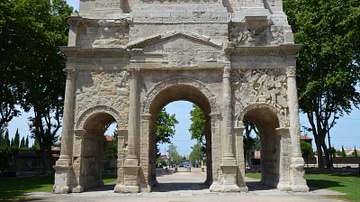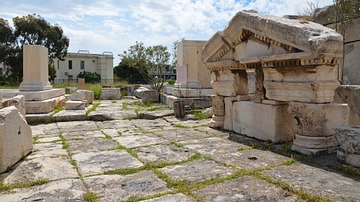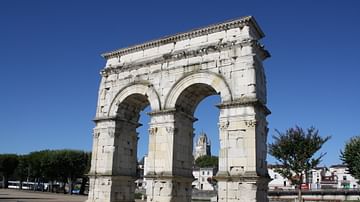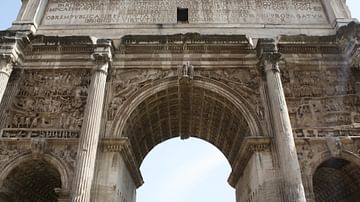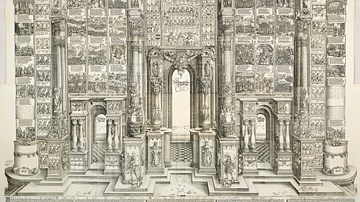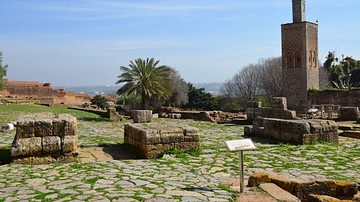Illustration
The Arch of Augustus in Fano (Italy) is a city gate in the form of a triumphal arch with three vaults that served as the entrance to the city of Colonia Julia Fanestris by the via Flaminia (modern-day Fano). The monument is dated to 9 CE by means of an inscription located on the frieze, with large characters carved in the rock which were once gilded in bronze.
The inscription reads:
IMP. CESAR DIVI F. AVGVSTVS PONTIFEX MAXIMVS COS. XIII TRIBVNICIA POTESTATE XXXII IMP. XXVI PATER PATRIAE MURVM DEDIT
Imperator Caesar Augustus son of a god, Pontifex Maximus, Consul 13 times, recipient of tribunician power 32 times, acclaimed imperator 26 times, father of his country donated this wall.
About the Author
Cite This Work
APA Style
Raddato, C. (2016, January 10). Arch of Augustus in Fano. World History Encyclopedia. Retrieved from https://www.worldhistory.org/image/4381/arch-of-augustus-in-fano/
Chicago Style
Raddato, Carole. "Arch of Augustus in Fano." World History Encyclopedia. Last modified January 10, 2016. https://www.worldhistory.org/image/4381/arch-of-augustus-in-fano/.
MLA Style
Raddato, Carole. "Arch of Augustus in Fano." World History Encyclopedia. World History Encyclopedia, 10 Jan 2016, https://www.worldhistory.org/image/4381/arch-of-augustus-in-fano/. Web. 24 Apr 2025.




